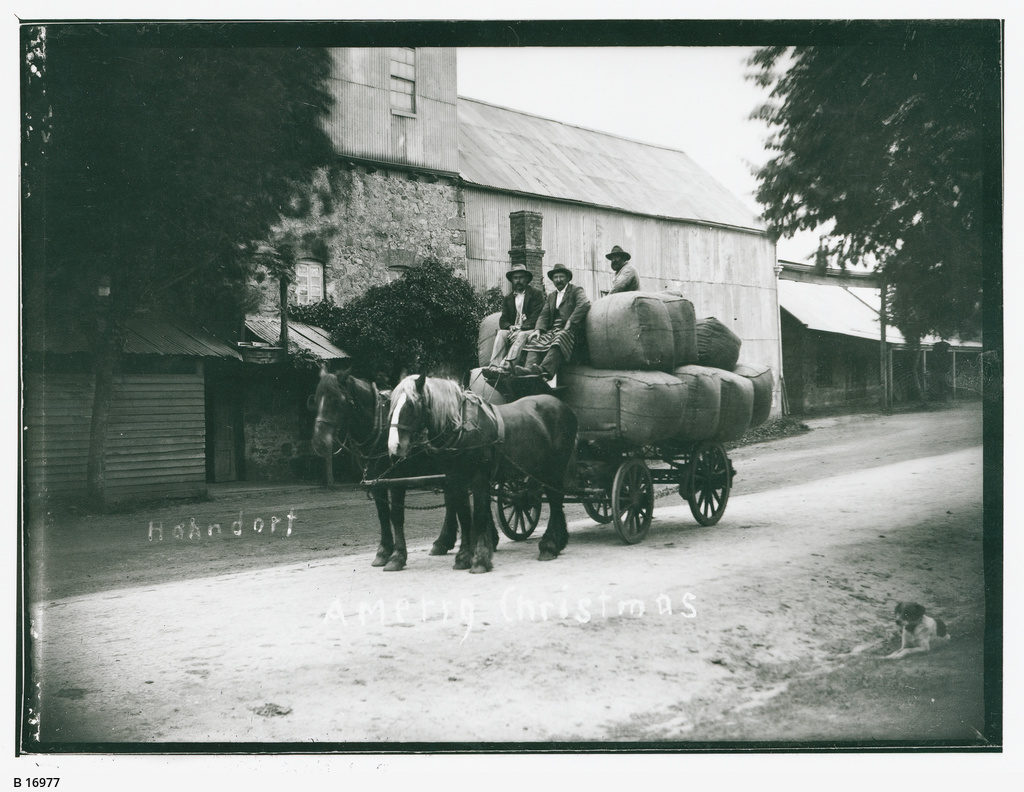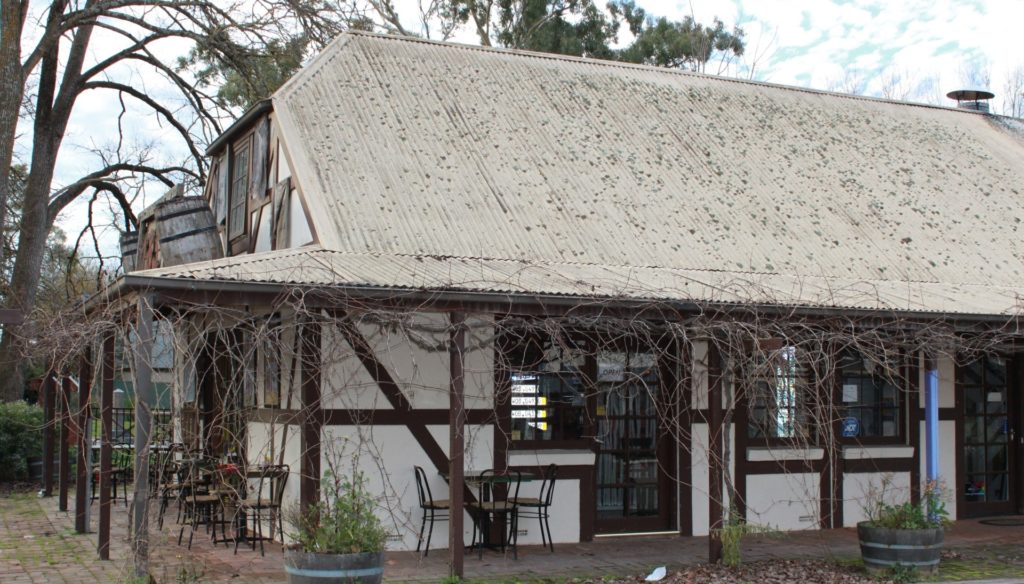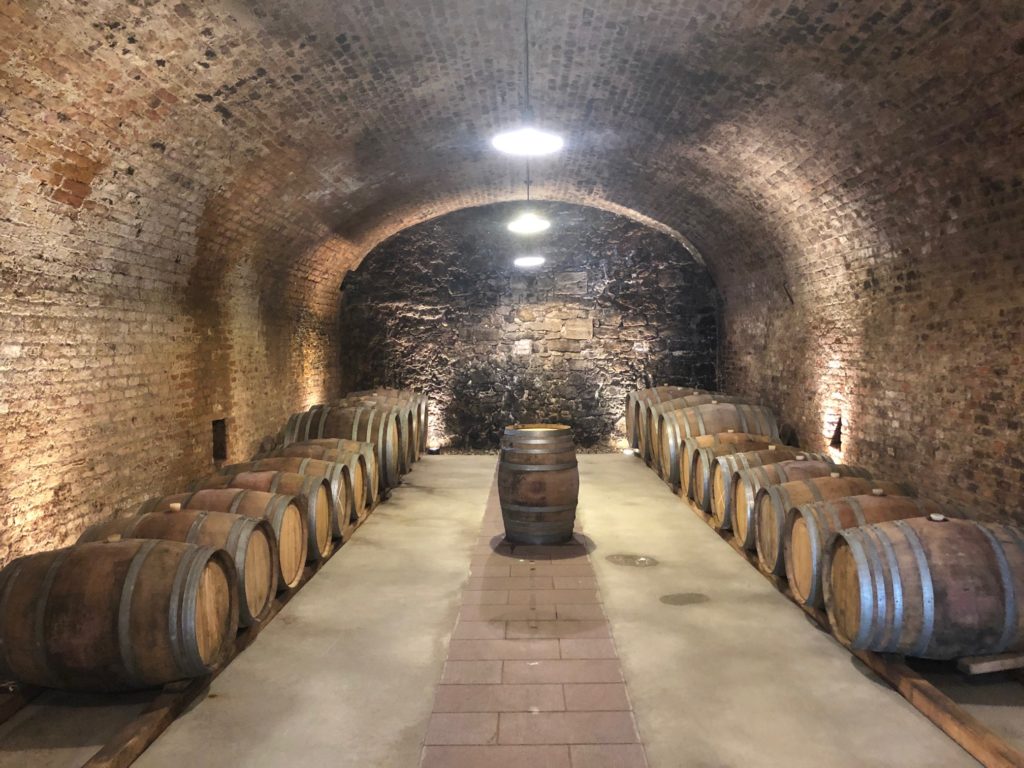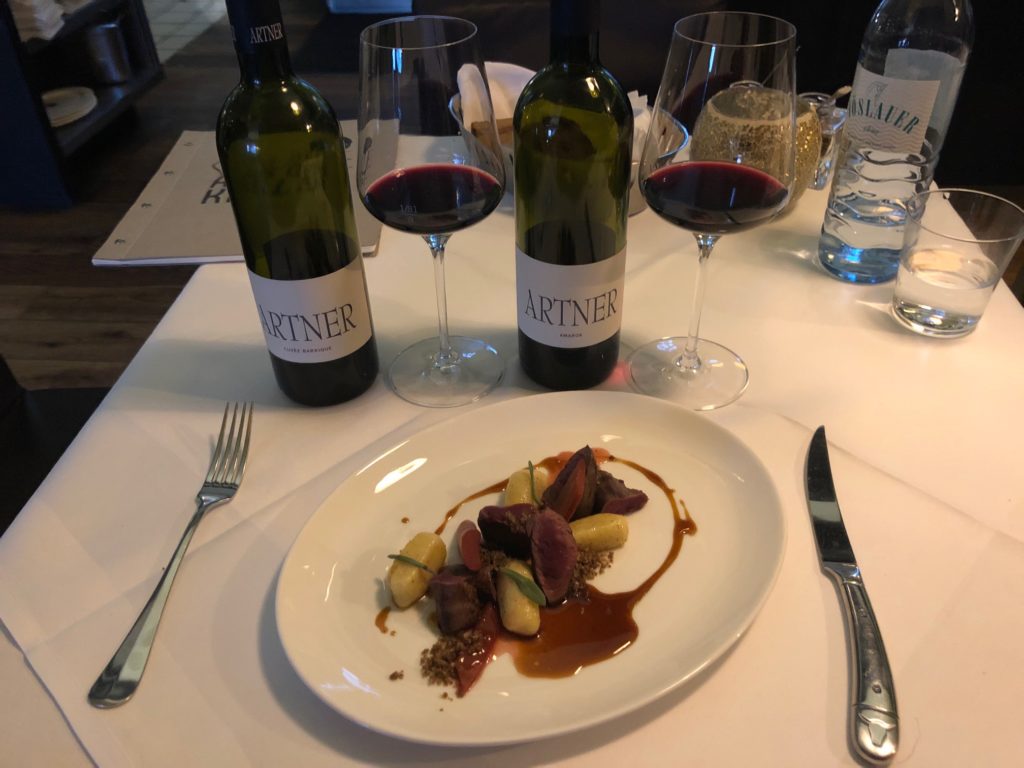
For the past decade at Hahndorf Hill we have been working to share our passion for Austrian varietals and a question I still receive with some regularity is: Why Austrians? Why in a market dominated by the so-called ‘noble’ grapes of France and Italy do we pour so much time and effort into these lesser-known grape varieties? We have always felt the answer to be quite simple but that is perhaps because we live and breathe it every day, so let me explain.

Everything we do at Hahndorf Hill revolves around our indefatigable sense of place. For us it has always been a question of topography, climate and culture. Our boutique vineyard is situated at the edge of Australia’s oldest-surviving German settlement – the small town of Hahndorf – which was founded by Lutherans fleeing religious persecution in Prussia and who sailed to Australia in 1838 under Captain Hahn. More than 180 years later, Hahndorf town still features a few buildings that bear testimony to the half-timbered Fachwerk construction reproduced by those Lutheran settlers in remembrance of what they had left behind in their Germanic homelands.

I have no doubt that in Hahndorf we could have made a living from producing Pinot Noir or even for that matter Tempranillo, instead of producing our ‘Austrians’. However, the rolling hills and gentle slopes and, more importantly, the warm days and cold nights of Hahndorf, provide our vineyard with an exceptional diurnal variation of up to 25 degrees; and it is this high diurnal variation which is key to the spice, texture and quality found in the best Gruner Veltliner wines produced in Austria. We knew, therefore, that Gruner and Hahndorf would be a good match.
Equally, we focus primarily on ‘Austrians’ in our vineyard because we love these grape varieties for their eminently drinkable, food-friendly nature, and because they offer something different, characterful and piquant in a world of wine that is completely dominated by the likes of Chardonnay, Sauvignon Blanc, Cabernet Sauvignon, etc.
In a spirit of constant learning and experimentation we recently planted a new Austrian in our vineyard – the marquee red grape variety, St Laurent. Once this was accomplished, we realised of course that this meant further research needed to be done, wines tasted, vineyards walked, cellars toured and thus bags packed, for yet another exploratory trip to Austria.
In May of 2019 I made my second trip to Austria with a whole day dedicated to the Thermenregion – the engine room of St Laurent production in the country. I have written previously in this blog of my visit to the estate of Johanneshof Reinisch and how it was here that I learnt of St Laurent’s true range, for at Reinisch I was introduced to wines that championed a bolder and more full-bodied style of St Laurent than that which I had tasted in 2017 at Schloss Gobelsburg in Austria’s Kamptal wine region.
The wines of the Old World can be extremely regional; while it is common for a grape variety to be grown across whole countries, within each country the results can vary from valley to valley. Think of it like an accent; each bottle is speaking the same language but with the cadences and inflections unique to each village. And few grape varieties speak of their patch quite like St Laurent. The St Laurent of the Kamptal region is ‘Pinot-esque’ in its delicacy and elegance, while those from the Thermenregion have a gravity and length more reminiscent of Syrah.
I have long preached of Gruner Veltliner’s stylistic range, from the lean and acid-driven Classics through to the decadent Reserves and hundreds of degrees in between. I now have a much better appreciation of how this kaleidoscope of nuance is not unique to Gruner, but rather is the rule across the Austrian palate of all its indigenous red grape varieties.

In both my trips to Austria I have always made a point of visiting as many wine bars and vinotheks as I could, not as an indulgence but in recognition that these are the best places to sample wines that will illustrate the spectrum of a variety’s stylistic limits. At the Freigut Thallern vinothek in the Thermenregion, a modern tasting bar has been opened adjacent to the cellars and in addition to their own wines the staff also pour and promote the wines of the wider Gumpoldskirchen sub-region.
While there were several St Laurents of exceptional quality which I tasted at Freigut Thallern, I was pleasantly distracted by the red blends. Perhaps not surprisingly given the winery’s Cistercian/ Burgundian roots, there were a number of ‘East meets West’ blends, in which the native St Laurent and Blaufrankisch grapes were partnered with Pinot Noir and Merlot to create wines perfect for wood-fired pizza, char-grilled lamb or venison, and deliciously dark chocolate.
Not far from the Thermenregion is the wine region of Carnuntum, which extends east of Vienna to Austria’s border with Slovakia. The Carnuntum is to Zweigelt what the Thermenregion is to St Laurent. It was the implacable Roman legions that first recognised the area’s viticultural potential; the region’s combination of Pannonian climate and rolling hills comprised of loam, loess and gravel, must have seemed to the soldiers to be a gift from Bacchus himself. Red grape varieties do especially well here and in late 2019 the region was awarded full DAC status, with Zweigelt and Blaufrankisch classified as the region’s signature reds. In addition to shining as a monovarietal wine, Zweigelt in the Carnuntum is often blended with Merlot, Cabernet Sauvignon and Blaufrankisch.

Due to time constraints, I could not visit the Carnuntum wine region personally; but I did the next best thing by tasting many of its best wines in a vinothek. The Vinothek W-Einkehr is in the heart of Vienna and is the perfect place to tour Austria’s wine regions from the comfort of a bar stool. Roland Weiderer is the owner and the law within this vinothek; good manners are prized above all things so Roland greeted me with a smile and a warm handshake when I arrived ten minutes early for our meeting, and I made sure to leave my dripping umbrella by the door and remove my hat as I entered. At the bar I outlined my mission and Roland was more than happy to guide me through the reds of Carnuntum, and of course Zweigelt proved to be the undeniable star.
Zweigelt is the love child of Blaufrankisch and St Laurent, and the essence of its nature is an easy-going, cherry charm, which probably explains why it is Austria’s most widely planted red grape. I tasted light, fruit-driven wines in a ‘nouveau’ style made to be drunk slightly chilled in the sunshine, all the way through to rich, oak-cloaked, spicy wines that put me in mind of Coonawarra Cabernets from the 90s. Roland wanted me to taste for myself all the bases that Zweigelt could cover, and he hit a home run. Thanks to his instruction, I left the intimate Vinothek W-Einkehr much richer in knowledge about Austria’s most popular red grape.
This experience was further enhanced by a visit to Vienna’s Artner am Franziskanerplatz restaurant, which is run by the Artner family from Weingut Artner in the Carnuntum. The estate of Weingut Artner dates back to 1650 and like most farmers in Eastern Europe they ran for many generations a mixed farm growing a variety of crops, together with raising livestock. In the 1980s the family decided to focus on wine production and today they also manage several good restaurants in and around Vienna. As I was dining alone, I asked for a table by the open kitchen so I could look in on the culinary works of art being created as I sipped on a glass of the house Gemischter Satz. I explained my mission to better understand the reds of Carnuntum to the sommelier and entrusted myself to his care.

Over the next two hours I was totally spoilt with course after course of perfectly matched red wine and delicious food. There were several highlights but the meal reached its zenith with the pink-seared venison, rhubarb, coffee and lavender gnocci being paired wonderfully with a glass of the Artner 2016 Rubin Zweigelt, with its black cherry notes and velvety tannins. The term ‘Rubin’ is a brand name for select, quality Zweigelts from Carnuntum and these wines carry the region’s symbol – the triumphal Roman Heidentor arch – on the capsule.
On this most recent trip to Austria my red wine focus was on St Laurent and Zweigelt but nothing happens in a vacuum, and this visit also provided invaluable context and depth to my understanding of Blaufrankisch which I had gained on my trip to Burgenland during my first trip to Austria. I came home to Australia even firmer in my belief that the red varieties of Austria have a place on Australian tables.
The red wines of Austria range from the ephemeral and refined to the brooding and powerful. Several factors have kept the red wines of Austria from gaining the attention of the wider Australian drinking public and while the number of Austrian red wines available here is limited, I hope this article goes some way to encouraging you to try something new and challenging to pronounce.
When I am asked why we grow what we grow, I ask in return: Why not? At Hahndorf Hill we have long felt our land wants to grow Gruner Veltliner, Blaufrankisch, Zweigelt and now St Laurent. Some of our neighbours may have trophy cabinets bursting with Pinot Noir and Chardonnay awards, and we are more than happy to toast their success – but with a glass of one of our own, award-winning ‘Austrians’!
